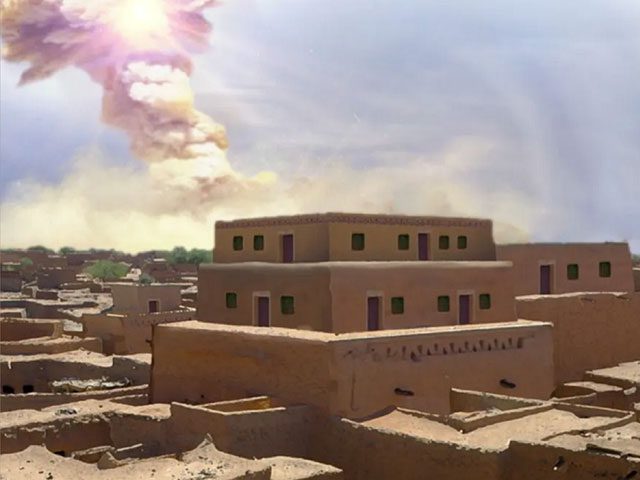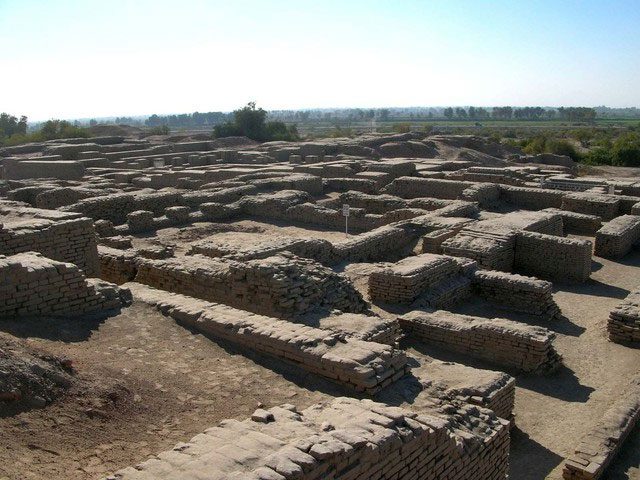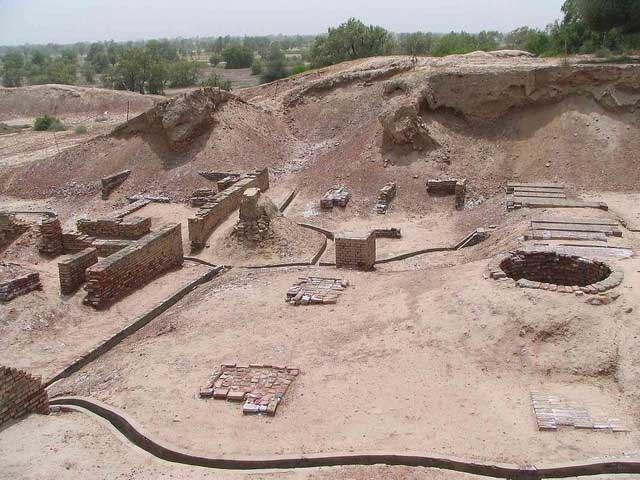The hypothesis regarding the existence of a nuclear explosion on the Hill of Death in India 4,000 years ago is drawing increasing attention from both academia and the public. This theory suggests that a large-scale nuclear explosion occurred in ancient India.
In a desolate area in northern India, a mysterious hill has recently been accidentally discovered. Preliminary assessments by experts indicate that this hill may date back to 4,000 years ago, corresponding with the period of the ancient Indian civilization.
However, what is shocking is that after a detailed examination of this hill, scientists uncovered an incredible fact: this death hill could be closely related to the release of nuclear explosions dating back to an unimaginable time!
This discovery has immediately attracted global attention and speculation, seemingly opening a mysterious door connecting ancient civilizations and modern technology.

As we know, the first nuclear bomb was detonated on July 16, 1945, at the White Sands Test Facility in Los Alamos, New Mexico. But was that really the first time the Earth witnessed a nuclear explosion? According to the Mahabharata, an ancient Indian epic written in Sanskrit, nuclear war occurred about 4,000 years ago.
Recently, in the ruins of an ancient city named “Lothal” in northern India, archaeologists accidentally discovered some shocking clues, leading to an incredible possibility: 4,000 years ago, a nuclear explosion incident may have occurred in India.
Lothal (literally meaning “Mound of the Dead”) is located in the Panchiyar region of Haryana, India, and is considered part of the ancient Harappan civilization. Archaeologists were intrigued when they found high concentrations of unstable radioactive materials while exploring this site.
Additionally, scientists discovered strange injuries and mutations occurring around the mounds. Nearby vegetation exhibited abnormal growth, and animal species showed peculiar behavioral changes. These phenomena reminded scientists of the possibility of a nuclear explosion. However, proving this hypothesis is not easy.

Through detailed research and analysis of this death hill, scientists found some unusual materials and structures. In particular, the high concentration of radioactive isotopes found on the surface of the mound has attracted the attention of scientists.
If this theory is correct, what would the nuclear explosion 4,000 years ago mean for ancient civilizations at that time?
First, a nuclear explosion would cause massive devastation and death. Ancient cities and agricultural lands would be destroyed, and humans and animals would face radiation hazards. This would plunge the entire region into chaos and panic, with the civilization on the ruins almost completely disappearing.
The vast amount of thermal radiation and dust released from the nuclear explosion would block sunlight, causing temperatures to drop and rainfall to decrease. This would dramatically impact agriculture, a sector upon which ancient civilizations relied, leading to food and water shortages that would unleash nuclear explosions and social instability. Simultaneously, the rays released by the nuclear explosion would also destroy the local ecosystem, causing many species to become extinct or face severe threats.

Archaeologists have stated that they will continue to conduct further research at the Lothal site and verify the possibility of a nuclear explosion. They plan to seek additional evidence through various scientific methods, including analyzing natural radioactive isotopes and detecting remains in the ruins. If this speculation is correct, it will significantly impact our understanding of human history and ancient civilizations, while also providing valuable lessons for humanity in the responsible use of nuclear energy.
Scientists have analyzed rock samples from formations surrounding the Hill of Death and found some melted materials and radioactive isotopes. These materials are similar to lava and radiation produced during the release of nuclear explosions.
However, these findings are not sufficient to prove the existence of a nuclear explosion event. Scientists emphasize that further research and analysis are needed to determine the origin and formation process of these materials.

Illustrative image.
Scientists have proposed several plausible explanations for the nuclear explosion that may have occurred 4,000 years ago. Initially, they thought it might be a natural event, such as a volcanic eruption or a meteorite impact.
These events could potentially release a huge amount of energy, similar to that of a nuclear explosion. However, this explanation remains controversial, as the traces of volcanic and meteoric impacts typically have distinct characteristics, while no similar evidence has been found around the Hill of Death.

The Harappan civilization was one of the most significant urban civilizations on the ancient Indian subcontinent. Its highly developed urban planning and sanitation system earned it great renown.
Whatever the truth may be, this mystery continues to puzzle researchers of ancient history and the general public alike. The thoughts and discussions sparked by this mystery will undoubtedly further enhance our understanding and research of ancient civilizations. Perhaps, we will uncover more clues to solve this ancient enigma in the future.


















































